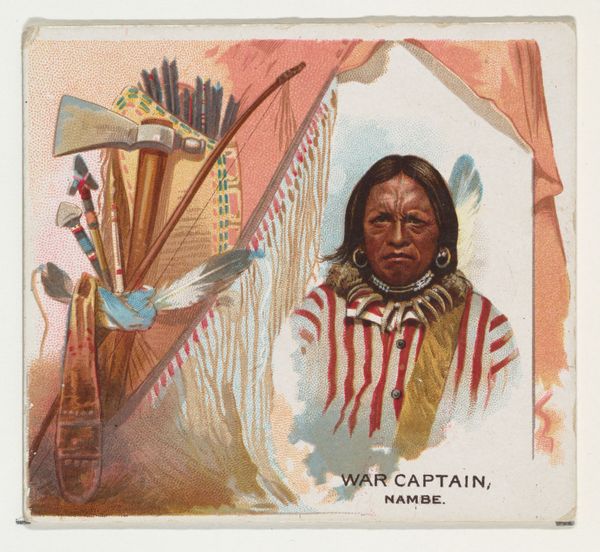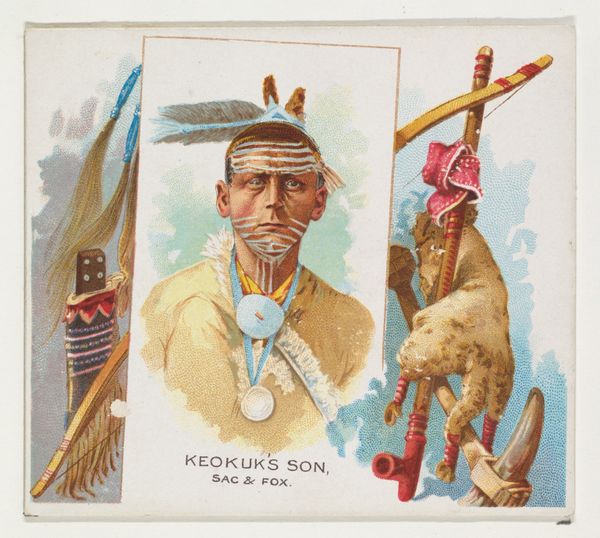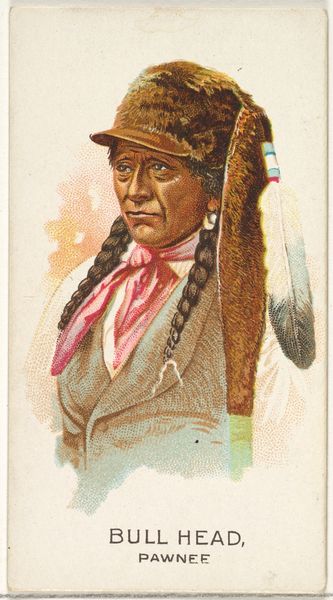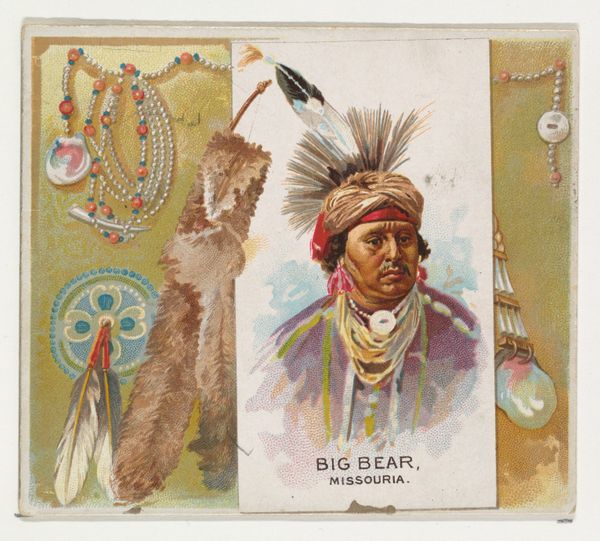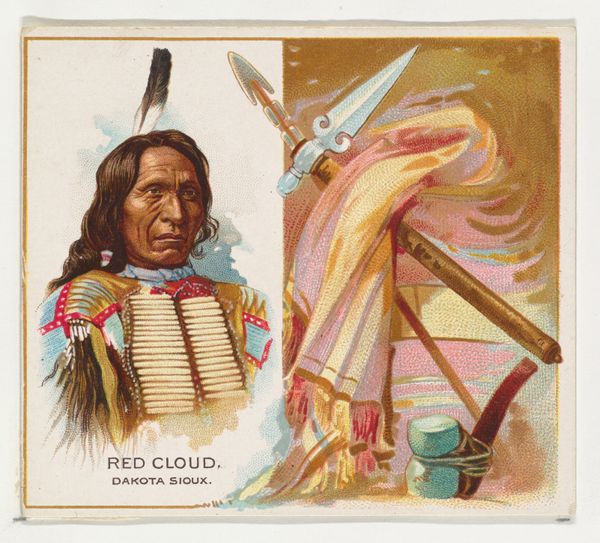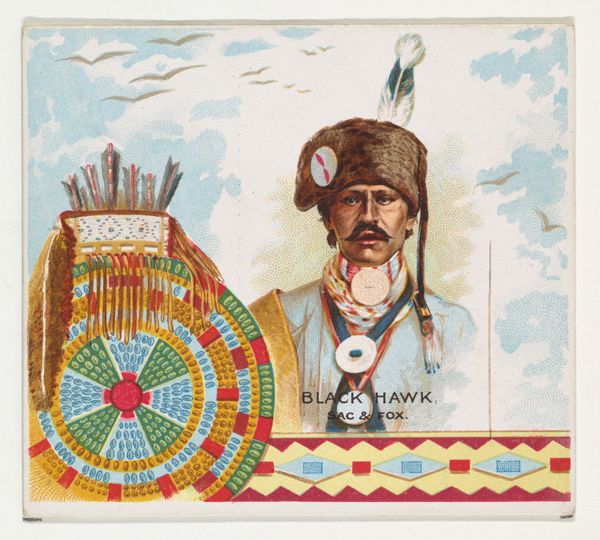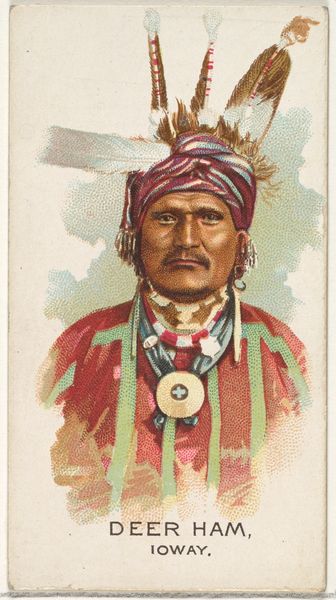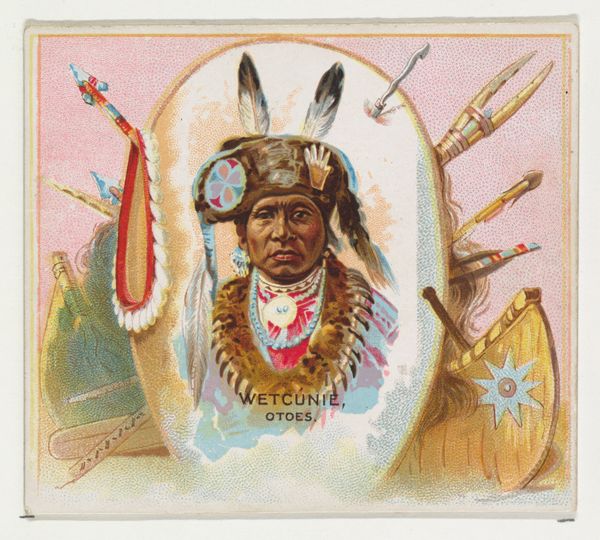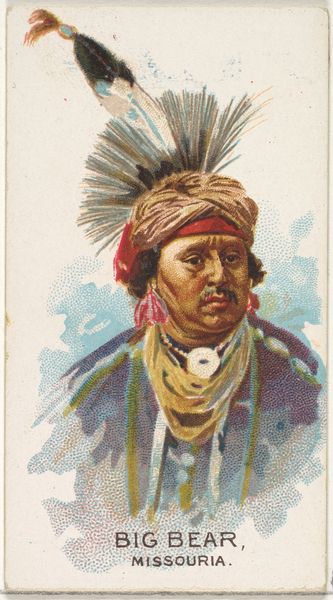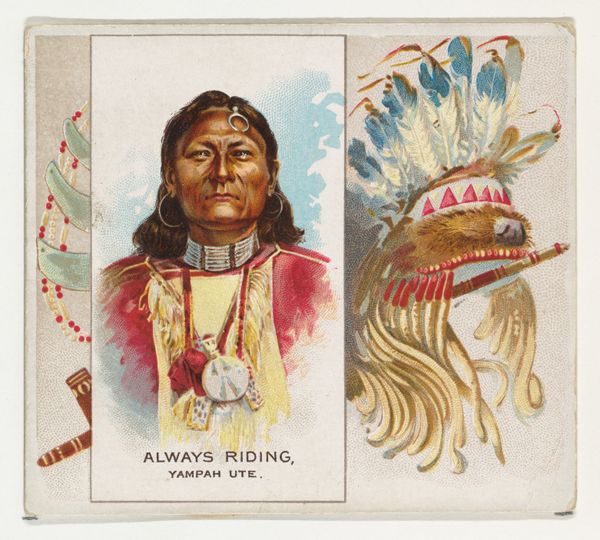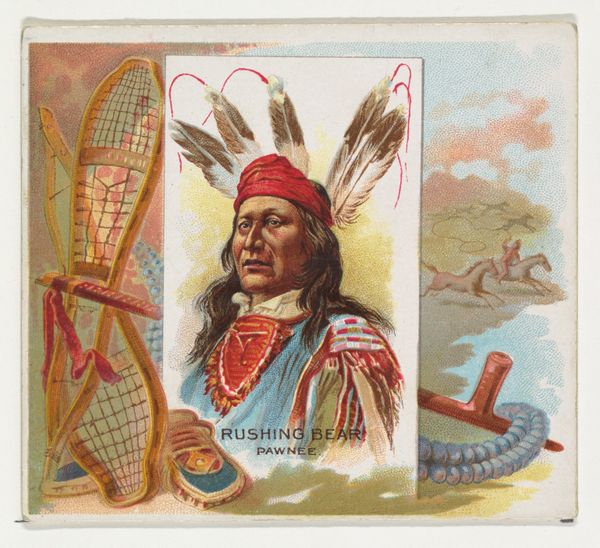
Geronimo, Apache, from the American Indian Chiefs series (N36) for Allen & Ginter Cigarettes 1888
0:00
0:00
drawing, coloured-pencil, print
#
portrait
#
drawing
#
coloured-pencil
# print
#
caricature
#
coloured pencil
#
folk-art
#
naive art
Dimensions: Sheet: 2 7/8 x 3 1/4 in. (7.3 x 8.3 cm)
Copyright: Public Domain
Curator: Here we have "Geronimo, Apache," a print from 1888, part of the "American Indian Chiefs" series produced by Allen & Ginter for their cigarette cards. What's your immediate take? Editor: My first impression? There's an unexpected tenderness here. Not the grim warrior I imagined. There's a gentleness in his eyes, a vulnerability, softened perhaps by the rosy hues. The flamboyant kerchief adds a touch of unexpected elegance. Curator: Absolutely, the softness strikes me too. This image and others from the set were obviously produced during a complicated time in US-Native American relations, at a time when US propaganda sought to characterize Native peoples. Allen and Ginter weren't aiming for historical accuracy or cultural sensitivity. It's crucial to view this within the context of late 19th-century commercialism and prevailing cultural attitudes. Editor: You’re right to bring in the politics. And yet...the artist, whoever they were, must have been trying for something beyond just a flat, commercial depiction. The arrangement of the objects—the bow, the arrows, the tomahawk— almost creates a still life beside him, items suggesting more than violence. Almost like symbolic artifacts? Curator: Indeed. Notice how Geronimo isn't depicted in a stereotypically "savage" pose, there’s no war paint and the portrait is strikingly human, perhaps even aimed at creating empathy. Yet, it still simplifies a complex person and a complex history. His likeness becomes a collectible commodity. Editor: It makes you wonder about the real Geronimo, doesn’t it? How much of this is performance, designed for the white gaze, and how much reflects some hidden truth? Cigarette card as fragmented history, wow. Curator: Exactly! The inherent paradox: the desire for authenticity battling against the mechanisms of commodification. But paradoxically, as a result we still look and reflect. Editor: I think that looking—and reflecting, and really listening to what this small, slightly smudged portrait whispers, is vital. Maybe it’s in that listening, we hear the stories and understand its nuances beyond this single, seductive image. Curator: I couldn't agree more. Thank you.
Comments
No comments
Be the first to comment and join the conversation on the ultimate creative platform.
